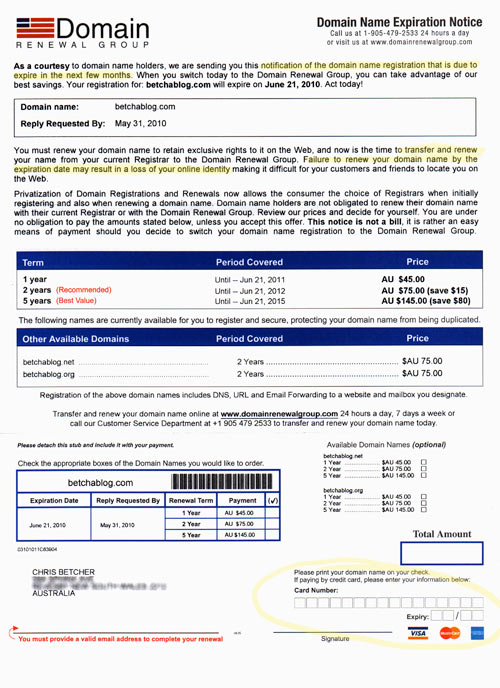 I have an RSS feed set up that automatically scans the Google news feeds for the phrase “PLC Sydney” or “Presbyterian Ladies College“, so anytime either of those phrases appear in a news publication worldwide I get notified of it. (Which, if you want to monitor your school’s online public image, is a useful thing to set up by the way!) While I do get the occasional mention of other Presbyterian Ladies Colleges such as the ones in Melbourne or Perth, and occasionally the abbreviation PLC Sydney turns up some non-related stuff, having the RSS feeds scanning the news for mentions of your school is handy.
I have an RSS feed set up that automatically scans the Google news feeds for the phrase “PLC Sydney” or “Presbyterian Ladies College“, so anytime either of those phrases appear in a news publication worldwide I get notified of it. (Which, if you want to monitor your school’s online public image, is a useful thing to set up by the way!) While I do get the occasional mention of other Presbyterian Ladies Colleges such as the ones in Melbourne or Perth, and occasionally the abbreviation PLC Sydney turns up some non-related stuff, having the RSS feeds scanning the news for mentions of your school is handy.
Recently, I spotted this article in one of the local papers. It was a project that I didn’t even even realise was taking place in the school so I was surprised when I spotted it. (I also like the idea that some of our teachers are now doing interesting projects that use ICT and they don’t need me to make it happen! Yay! The good kind of redundant!)
What I find amusing is that the newspaper has published the name of the school and the full names of the students, along with a photo… three pieces of information that the cybersafety experts will all tell you should not be made available online. I suspect that if one of our teachers got their students to do an in-class online project that published their full name, school and photo, they would get a stern talking to. However, there is still a belief that, because it was published “in the paper” (which also happens to be online) then it’s ok.
We do, in fact, have a “Do Not Publish” list of students, which is derived from a form that all parents fill out at the start of their enrolment at school. On this form they give advance permission – or not – for their child’s photo and name to be used in school publications. We keep a record that covers both print and online separately, and before any child’s details can be published we check the Do Not Publish list. In reality, out of a school of 1300 kids K-12, we have maybe less than 10 whose parents have elected for them to remain unpublishable.
Personally, I think that the benefits of getting some press for the students, either online or in a more traditional format, is enormous. Sporting achievements, success in interschool competitions, musical events, academic successes, etc… these things are all worthy of celebrating and telling the world about. The boost that these kids get to their self esteem, their reputation and their public visibility is a positive thing and these sorts of publications can start to form the basis of their longer term footprint, digital or otherwise. While we have to respect the wishes of parents who choose not to allow their children to be published (and sometimes those wishes are based on valid reasons and sometimes it’s just paranoia and fear) the kids who do get published “in the paper” really love seeing themselves there.
In a world where being “in the paper” also means being online, this opens a real can of worms. We tell the kids one thing as we drill cybersafety into them – don’t give away details like your name or school – yet we gladly celebrate them being published online in other more traditional forums using all of these very same details. It’s an interesting double standard. The local paper is published to the open web with no passwords, no restrictions, yet we baulk at getting kids to publish the same information about themselves to other formats that are equally as open and public.
Thank goodness that all those fears about online safety are so blown out of proportion or this might actually be a real problem.
PS: By the way, if you haven’t seen it, the students’ final work is online at http://plcvasproject.blogspot.com and is worth seeing. I’m sure they’d love a comment or two if you get a chance.
Photo embedded from the Inner West Courier

 If there’s one thing I hate it’s when people assume I’m an idiot and try to rip me off.
If there’s one thing I hate it’s when people assume I’m an idiot and try to rip me off. Silly me. I was mowing the lawn the other day and I stupidly managed to get my big toe caught in the mower blade while it was running at full speed. The blades ripped right through my shoe and mangled the tip of my big toe. Needless to say, it really hurt! I was home on my own, and had to figure out what to do next… there was blood going all over the place, I felt myself going into shock, as I tried to figure out how to get myself to a doctor. It was not a lot of fun. The good news is that despite smashing my toenail off and slicing the end of my big toe, it could have been a hell of a lot worse. Fortunately, the bone was not broken and I still have all my toes so apart from a bit of pain and inconvenience I think I’m pretty lucky.
Silly me. I was mowing the lawn the other day and I stupidly managed to get my big toe caught in the mower blade while it was running at full speed. The blades ripped right through my shoe and mangled the tip of my big toe. Needless to say, it really hurt! I was home on my own, and had to figure out what to do next… there was blood going all over the place, I felt myself going into shock, as I tried to figure out how to get myself to a doctor. It was not a lot of fun. The good news is that despite smashing my toenail off and slicing the end of my big toe, it could have been a hell of a lot worse. Fortunately, the bone was not broken and I still have all my toes so apart from a bit of pain and inconvenience I think I’m pretty lucky.